ATENA 2025 has been released recently!
Use its new features to make your research competitive
Dear ATENA Friends,
We’re excited to share the latest updates from the ATENA world — including new product features, inspiring success stories, recent publications, and a glimpse into our future development plans.
As promised in our Fall 2024 newsletter, we’re pleased to announce the release of ATENA 2025o, featuring significant advancements in our next-generation preprocessor.
Whether you're a student or a practicing engineer, a new user or a seasoned expert, the new preprocessor is designed with you in mind. It offers a user-friendly experience for straightforward 2D and 3D modeling, while also supporting advanced capabilities such as thermal analysis, a durability model for reinforced concrete (RC), and corrosion simulation. Enjoy intuitive modeling of RC structures, unique crack visualization, and dynamic, real-time graphical feedback during analysis.
To help you make the most of these powerful new features, we’re hosting a series of webinars dedicated to ATENA 2025. We warmly invite you to join us — please see below for dates and registration details.
We also look forward to meeting you in person at upcoming international conferences, exhibitions, and other industry events throughout the year.
With warm regards from Prague,
The ATENA Team |
ATENA Development
Throughout the last year we have released several updates of ATENA 2024. The latest update was released on November 11th including mainly various improvements and problem corrections.
Now a major update has been prepared for you. ATENA 2025 is available for download to all users with valid maintenance license till May 5, 2025. This update continues various improvements and new development in the new native Engineering preprocessor. Our main goal is to unite our two ATENA products: Engineering and Science into a single user friendly and comfortable environment covering all your needs for the realistic simulation and modelling of reinforced concrete structures. See the list below of the major new developments. |
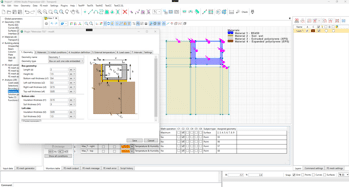
Fig. 1: ATENA 2025 allows the development of user defined modules for specialized structures, like this Python module for concrete hydration heat analysis for typical concrete block arrangements.
|
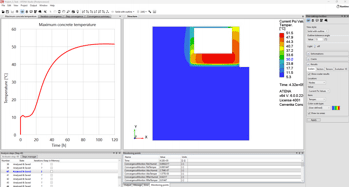
Fig. 2: Hydration heat analysis development in a typical structural arrangement generated by a used defined specialized Python module.
|
ATENA 2025 Engineering Preprocessor:
- new support for thermal and moisture analysis enables to simulate the hydration of your concrete and its impact on potential crack development as well as for instance high temperature fire loading on reinforced concrete structures.
- improved BIM support by importing ifc files.
- durability models for chloride ingress, carbonation, reinforcement corrosion, alkali-silica reaction (ASR)
|
- improved and enhanced Python scripting support. It is possible to develop user defined methods for the complete model development for specialized structural elements or problems. See Fig. 2 showing a specialized interface for simplified modelling of temperature development during concrete hydration.
- automatic identification of interface elements make it much easier to develop complex models with internal contacts and interfaces.
- plus miscellaneous improvements and corrections in stability and user friendliness.
|
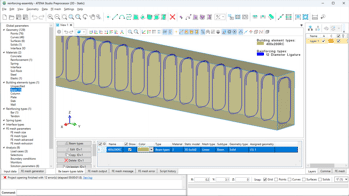
Fig. 3: ATENA 2025 supports IFC import such as this beam element with stirrups.
|
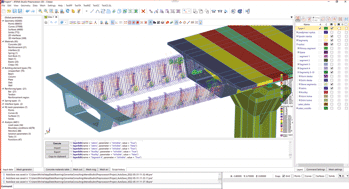
Fig. 4: Modelling of a complex segmental prestressed concrete bridge with detailed arrangement of normal reinforcement in the new ATENA Engineering preprocessor available in ATENA versions 2024 and 2025.
|
ATENA Studio & FE analysis core system (both in ATENA Science and Engineering:
- visualization of true shape of 1D beam and 2D shell elements.
- new quadrilateral spring elements make it easier to model flexible planar support in local as well as global coordinate system
- export of internal force diagrams into automated report generation feature as well as to csv files for further postprocessing in Excell.
|
- extended finite element library for thermal analysis: linear and quadratic pyramid elements with Gauss as well as Newton-Cotes integration rules
- improved support for FE model generation directly from g-code for modelling and simulation of 3D printing with planar as well as nonplaner printing layers.
- new output quantities for easy identification of concrete material cracking and crushing status.
- ground accelerogram support for all directions.
|
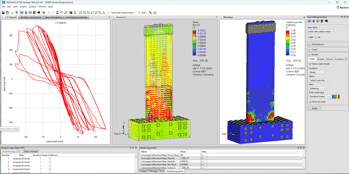
Fig. 5: Modelling of cyclic reinforced concrete wall behavior. Right figure demonstrates the new output quantity Yield/Crush Info: Softening indicating the areas with concrete softening/crushing in compression.
|
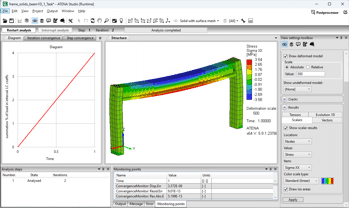
Fig. 6: ATENA version 2025 supports the full visualization of the 3D geometry of 1D beam elements both in the pre- as well as in the post-processor for the realistic visualization of engineering quantities on 1D beam and 2D shell elements.
|
- new user parameters for better control over "Master-Slave" conditions: increased performance by limiting the contact search by a given radius, possibility to create contacts for overlapping elements, which is especially usefull for the simulation of 3D printing.
The new ATENA 2025 can be downloaded from the downloads section on our website. Users with valid maintenance support can download and use it immediately. If you are not sure about the status of your subscription license or maintenance, please do not hesitate to contact us by email or phone.
The new users can install the software as well and request a 30 day totally free and fully functional trial license directly from the ATENA Center interface after the installation. |
Success Stories
Evaluating the effects of loading protocol on the strength and deformation capacity of Flexure-Shear critical concrete columns
Seyed Sasan Khedmatgozar Dolati,
Adolfo Matamoros,
Wassim Ghannoum,
https://doi.org/10.1016/j.engstruct.2023.115592 |
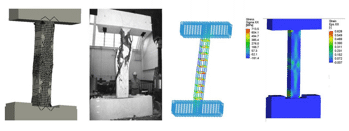
Fig. 7: Comparisons of damage and crack patterns between experiment and simulations.
|
|
This research focuses on the behavior of reinforced concrete columns during earthquakes, specifically examining how different lateral loading protocols (e.g., monotonic and cyclic loading) affect damage progression, strength, and deformation capacity. The authors developed nonlinear finite element models calibrated against experimental data from tests on seven columns, each designed with varying structural parameters. All columns ultimately experienced axial collapse due to cumulative damage from lateral loading. The study compares how different loading histories influence key aspects such as the onset of strength degradation and the drift levels at critical damage states. |
Nonlinear Analysis of Externally Prestressed Reinforced Concrete T-beams with Varying Deviators and Tendon Configurations
Asdam Tambusay, P. Suprobo, B. Suyanto, R. Zufarihsan, C. Irawan, B. Santoso, IABSE Sympposium Tokyo 2025
In this work, the researchers set themselves the goal of to explore the structural behavior and design complexities of externally prestressed concrete beams and to demonstrate how nonlinear finite element analysis (NLFEA) using ATENA Science can enhance modeling accuracy and inform modern bridge design. |
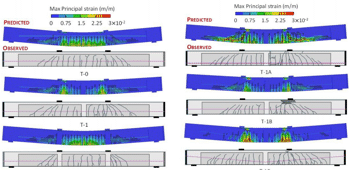
Fig. 8: Comparison of Failure Crack Patterns.
|
- onlinear finite element analysis with with ATENA was shown to accurately predict beam responses with external prestress
- second-order effects was shown to reduce capacity but could be minimized by optimal deviator placement
- larger tendon area increased strength but reduces ductility; in contrast, lower prestressing force increases ductility
- crack patterns matched experiments with straight tendon showing midspan flexural cracks and draped tendon showing end-region cracking
|
Upcoming ATENA Webinars
|
We’re excited to announce a series of upcoming webinars that dive into the powerful capabilities of ATENA 2025 for nonlinear analysis of concrete structures. Join us for these practical sessions to expand your knowledge and skills. See the tentative list of future webinars. The exact time and time will be announced on our website: |
|
1. Introduction to nonlinear analysis in ATENA 2025 (presented by Jan Cervenka)
Introduction to the preparation of the model in ATENA Preprocessor including the creation of geometry, material settings and assignment, FEM mesh definition, boundary conditions with loading history setting, and solution method.
This first virtual event is scheduled on Tuesday, June 17th, 2025, from 2:00 to 3:00 PM Central European Summer Time (CEST).
This webinar is free of charge and will also be recorded, with the recording made available to participants afterward.
To secure your spot, please register HERE.
|
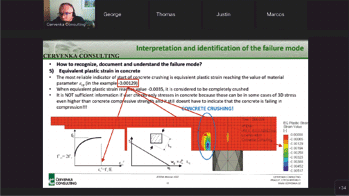
Fig. 9: Image from a webinar titled: Overview and Advanced Topics on Postprocessing and Nonlinear Analysis Evaluation in ATENA Studio.
|
|
2. Simulation of fire resistance of reinforced concrete structures (presented by Dr. Michal Ženíšek)
Fire resistance analysis involves two analyses where the first focuses on thermal load distribution and the second captures structural response to elevated temperatures. Please check our website for the exact time and date and registration form.
3. Analysis of Hydration Heat Development in Young Concrete (presented by Dr. Jiří Rymeš)
Simulation of concrete hydration is introduced as coupled analysis including transport analysis with heat transfer inside the structure and static analysis considering the possible overheating effects on structural integrity. The exact time and date will be announced on our website.
4. Simulation of the construction process (presented by Ing. Mohamad Ahmad)
The construction process is described in detail regarding material assignment and loading history capturing the actual process. The exact time and date will be announced on our website.
5. Modelling of strengthening of the concrete structure
There are various ways how to strengthen existing structures. Examples of strengthening with various materials are introduced including the way to attach them to the original structure. The exact time and date will be announced on our website.
The ATENA webinars from previous years you can found on YouTube channel here. |
The New Project Started in 2025
Neutron flux effect on concrete shield building, from meso scale to structure scale (NETFLUX)
Partners:
Červenka Consulting s.r.o. - Ing. Jan Červenka, Ph.D.
Centrum výzkumu Řež s.r.o. - Mgr. Kamil Sobek, Ph.D.
Czech Technical University in Prague (CVUT) - prof. Ing. Petr Štemberk, Ph.D., D.Eng.
Commissariat à l’Energie Atomique et aux énergies renouvelables (CEA), France - Philippe Prené
The objective of this project is to investigate the effect of the neutron flux magnitude at the same final fluence on the level of damage of concrete used for shielding ionizing radiation and to use these results to validate the developed software, which will be used for assessing the level of damage of shielding concrete structures. |
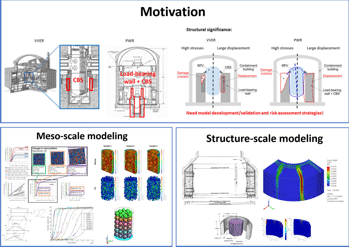
Fig. 10: Schematic overview of the project NETFLUX combining multiscale modelling and unique experimental research on durability of concrete biological shielding structures.
|
|
The developed experimental data set, applicable not only to existing nuclear facilities, will be obtained at final fluences corresponding to 80 years of operation of commercial nuclear facilities. Within the proposed NETFLUX project, teams from Czechia and France, experienced in software development in this field, will collaborate, thus guarantee the creation of previously unimplemented meso-scale models and the possibility to perform their cross-validation. |
Where You Can Meet Us
|
June 11-13, 2025
EFORT 2025
Lyon, France
Event website
June 16-18, 2025
fib Symposium
Antibes, France
Event website
August 10-15, 2025
28th International Conference on Structural Mechanics in Reactor Technology (SMiRT28)
Toronto, ON, Canada
Event website
October 26-29, 2025
ACI Fall Concrete Convention
Baltimore, MD, USA
Event website |
Recent ATENA Articles
|
CERVENKA J., AHMAD M., RYMES J., JENDELE L., Efficient Macro-scale Models for Reinforcement Corrosion Modelig in Reinforced Concrete Structures, 12th International Conference on Fracture Mechanics of Concrete and Concrete Structures, FraMCoS-12, April 23-25, 2025, Vienna, Austria
CERVENKA J., MARIK R., DRAHY V., JANDA Z., KOVAR J., AI Based Surrogate Model for Digital Twins in Reinforced Concrete, 5th International RILEM Conference on Numerical Modeling Strategies for Sustainable Concrete Structures, SSCS2025, July 7 –9, 2025, Rotterdam, The Netherlands
CERVENKA J., RYMES J., AHMAD M., JENDELE L., Modelling of durability and corrosion in nonlinear analysis of reinforced concrete structures, 30. International Symposium BRIDGES 2025, April 24–25, 2025, Brno, Czech Republic
CERVENKA V., CERVENKA J., RIMKUS A., Gribniak V., Finite Element Modeling of Crack Width and Localization in
Reinforced Concrete, Buildings 2/2025, https://doi.org/10.3390/buildings15040529
DAESCU A., C., GONZALEZ-LIBREROS J., WANG CH., CHÁVEZ A., A., KOVAR J., NILSSON L., LARSSON T., ELFGREN L., CERVENKA J., SAS G., Multilevel evaluation procedure for the demolition of prestressed concrete bridges: the case of the Kalix bridge in Northern Sweden, Structure and Infrastructure Engineering, https://doi.org/10.1080/15732479.2025.2474695
JENDELE L., RYMES J., CERVENKA J., HERZFELDT M., Time dependent modelling of concrete for the simulation of 3D printing, 16-18 June, 2025, fib Symposium, Antibes, France
KOVAR J., CERVENKA J., LEHKY D., NOVAK D., CERVENKA V., FE Modelling of Crack Width in Reinforced Concrete Beams Supported by Artifical Neural Network Surrogate Models, 12th International Conference on Fracture Mechanics of Concrete and Concrete Structures, FraMCoS-12, April 23-25, 2025, Vienna, Austria
|
|